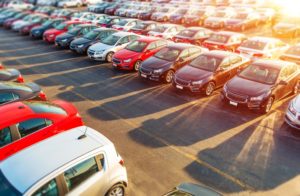
Have you ever driven around the same block repeatedly, praying for a parking spot, any parking spot? It’s one of the most frustrating experiences for regular commuters and the situation doesn’t seem to be improving. Conventional office parking standards have normally required more parking than building occupants typically need. But changing business paradigms are producing office layouts that pack employees closer together, which is increasing demand for parking, and therefore, parking requirements.
Many communities are responding by changing their traditional parking requirements. There are three ways that changes in transportation are impacting parking ratios and here is what you should keep in mind as these trends continue to evolve.
Open Work Spaces
For nearly two decades, old private office and individual cubicle workspace has shifted to open workspace that promotes a more collaborative environment. The net result is an increase in the density of workers in a building, leading to greater demand for parking. Two hundred square feet of workspace per person has become common, and a ratio of 1,000 feet per seven people is not that uncommon anymore.
The trend toward more open and collaborative working environments might be great for building teamwork and keeping office space costs down, but it’s creating a parking nightmare.
Electric Cars
More and more people are opting to purchase electric or hybrid vehicles. In the first quarter of 2016 electric car sales increased by an extraordinary 42 percent globally. This rise means that the demand for electric charging stations is also increasing. City planners and landlords alike must consider this trend when building and renovating parking areas, and employers should plan accordingly.
Uber and Lyft
Along with business paradigm shifts that are increasing the density of workers in the metro area, such as more open work spaces, there are also trends simultaneously reducing the need for parking. The popularity of Uber and Lyft is a great example.
As these companies gain popularity and more drivers jump on the bandwagon, the price of a ride to work is becoming more affordable. Perhaps it is becoming so affordable that workers are opting for carpooling, or a ride to work, instead of driving their own car. This shift could actually reduce the need for parking space and further complicate attempts at planning.
In fact, a recent article reports that parking revenue averages 10% of a central business district office build’s gross revenue, so if parking spaces are not repositioned appropriately as companies like Uber and Lyft continue to change the landscape, a developer could be facing a significant profit loss.
Perhaps new features like curbside pickup and ride-sharing lobbies will become more sought-after by tenants of Class-A buildings.
More Remote Workers
According to a recent report from Highfive, there was a 79.7 percent increase in the number of remote workers in the United States between 2005 and 2012. This trend toward more remote employees should also reduce the demand for parking in the coming years. Sharing a parking spot is also becoming far more common; the days of having your own reserved parking space are quickly being forgotten.
Moving forward …
It’s clear that parking trends are continually fluctuating, and its impact on metropolitan areas will change dramatically in the years ahead. Developers, tenants, and employers alike will all need to pay careful attention to these trends and adapt. When faced with demands from employees for changes to current parking conditions, wise employers should conduct a parking survey and work with their staff to find solutions that meet today’s evolving needs.
If you’re a commercial tenant, having a knowledgeable real estate professional by your side to negotiate lease conditions can help you navigate requests like parking, amenities and more.
